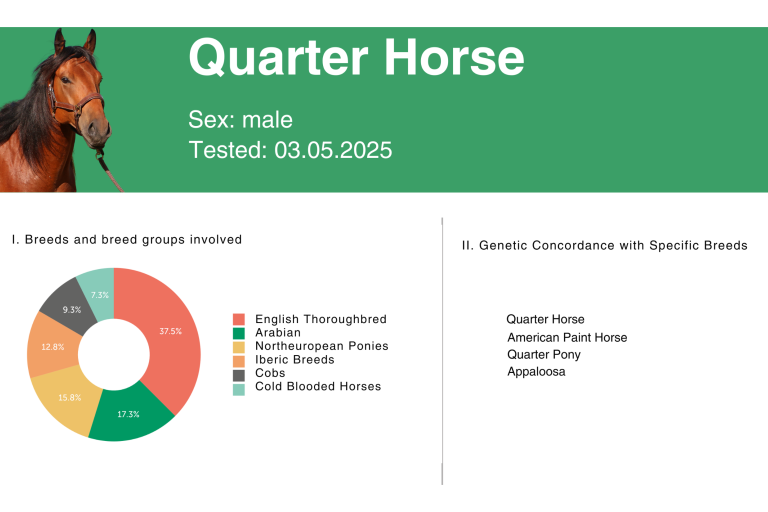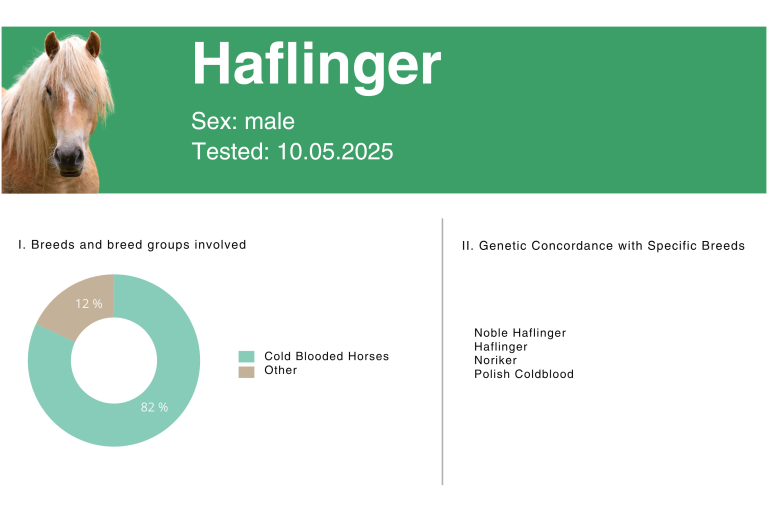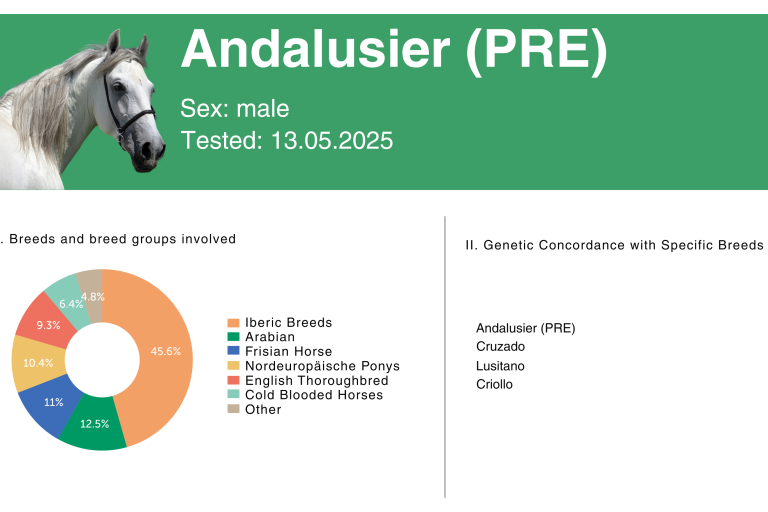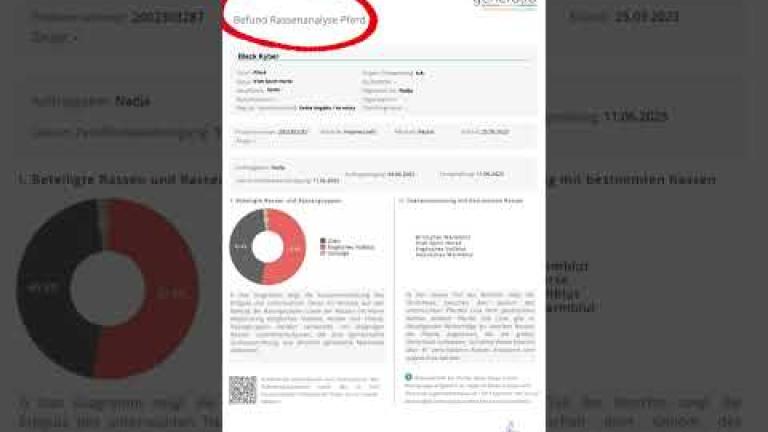Examples of Breed Analysis Results
Based on selected findings, you can see here how our unique data set allows you to determine the specific breed composition of horses. Please note: The breed analysis only reflects the condition of the individual animal examined. Interpretations regarding the origin and breeding history of the horse are derived from the findings.
In Part I of the findings, the breed groups contributing to the genetic composition of the examined horse are presented. This horse shows a high proportion of the “cold-blooded horse” breed group. This group includes not only heavy draft horses but also lighter types like the Haflinger. Together with the proportion of Northern European pony breeds, one can infer a smaller body size compared to warmbloods. Since Edelbluthaflingers and Haflingers are partly influenced by Arabians, their presence is understandable. Proportions of “Thoroughbred,” warmbloods, and other breeds grouped under “Other” are often found in mixed-breed horses.
In Part II, the Edelbluthaflinger and Haflinger are identified as the most genetically similar breeds. The Edelbluthaflinger results from targeted crossbreeding of Haflingers with Arabians. The cold-blood and Arabian contributions found in Part I support the assumption that an Edelbluthaflinger likely played a role in this horse’s breeding history.
In Part I of the findings, the examined horse reveals a ‘colorful mix’ of breeds and breed groups. Knowing the origin and breeding history of the Quarter Horse, this is not surprising. During the colonization of North America by people from different backgrounds in the 16th and 17th centuries, they brought horses from their homelands and developed the Quarter Horse from them. Key foundation breeds include Arabians, Barbs, Thoroughbreds, Irish ponies, and horses from the Iberian Peninsula. This complex breeding history is reflected in the composition of breeds and breed groups identified.
In Part II of the analysis, which assesses similarity to specific breeds, it is not surprising that the Quarter Horse appears first, followed by other American breeds. These breeds are genetically very similar.
Overall, the results confirm the breed classification of the horse provided by the sender.
In Part I of the findings, the breed groups contributing to the genetic composition of the examined horse are presented. This horse consists genetically of about 90% cold-blooded horses and 10% other breeds and breed groups. The cold-blood group includes both heavy draft breeds and lighter types like the Haflinger. Proportions from other breed groups and breeds are grouped under “Other.”
The similarity analysis in Part II shows that the horse is most genetically similar to the Edelbluthaflinger, Haflinger, Noriker, and Polish Coldblood.
In Part I of the findings, the breed groups contributing to the genetic makeup of the examined horse are presented. A complex genetic mix of various breeds and breed groups is evident. The largest share, at 45.6%, comes from Iberian horse breeds; the rest is a diverse mix of different genetic influences.
This composition reflects the breeding history of the Andalusian, which includes influences from local Iberian lines as well as Oriental and Central European horse types.
Part II shows that the horse has the greatest genetic similarity to the Andalusian / Pura Raza Española (PRE). These two are grouped together because they overlap significantly genetically: The PRE is a strictly selected part of the Andalusian breed with closed pedigree lines.
The additional breeds identified—Cruzado and Lusitano—also fit within the Iberian horse category.
Nadja from bonjourbellvue reports on the results of the breed analysis for her horse
To the video: Watch now.





